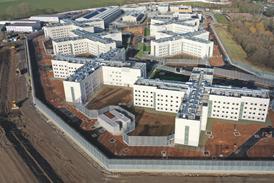Ken Livingstone’s latest standards for sustainable buildings in London require engineering input at an early stage in the design process to get planning approval for major projects.
Ken Livingston, London’s Mayor, has released new standards for sustainable buildings that give engineers a key role in helping clients obtain planning approval for major projects.
The Mayor’s new Supplementary Planning Guidance on Sustainable Design and Construction – published last May – sets out ‘essential’ and ‘preferred’ standards to be addressed by planning applications for all major developments.
The new SPG offers engineers the opportunity to provide clients with invaluable advice to help them obtain planning approval from the GLA. Engineers have traditionally had little involvement in planning applications, but this will have to change as architects and construction clients look to engineers to provide early-stage design advice on key issues such as energy and carbon emissions, water use, avoiding mechanical cooling, emissions from boilers, etc.
Although this planning guidance only applies to London, the London Plan has been influencing the development of other ‘Regional Spatial Strategies’ and many are adopting similar standards. All regional and planning policies are currently being written, as required by the Planning and Compulsory Purchase Act 2004 and under this legislation they all have to address sustainability issues.
What do you have to do?
The SPG states that strategic developments referable to the Mayor are expected to meet all the ‘essential’ standards. They also have to demonstrate how they have met the ‘preferred’ standards. There is a bit of slack in the system: ‘where essential standards are not achievable on site, any adverse effects should be minimised through local mitigation measures’. So, if it isn’t feasible to achieve one of the standards on the site, then this would be negotiable, as long as something is done to improve performance. For example, on a recent project standard bathroom pods are proposed, which do not have sufficient water efficient features such as low-flow showers or aerated taps. Instead, a greywater recycling system is being proposed to reduce the demand for mains water.
The draft alterations to the London Plan were published at the same time as the SPG and contain new policies and commitments that signal the issues likely to be priorities for planning applications. These issues are highlighted below.
Issues covered by the SPG
• Energy. The SPG publishes the revised energy hierarchy for the first time. Previously, the Mayor’s Energy Strategy proposed the following priorities: energy efficiency; renewable energy; and finally combined heat and power. The new hierarchy moves combined heat and power and community heating above renewable energy and prioritises passive design, solar hot water heating and tri-generation (preferably fuelled by renewables). It also provides a template for the data required for an energy statement and specifically requires predicted energy use, broken down into electricity, heating and cooling for the baseline design and the actual proposals.
For those engineers who have been involved in major developments in London, there will be no surprises here. However, it is clear that the GLA’s policies are being implemented with increasing rigour and it is becoming increasingly difficult to demonstrate compliance with the policies. Engineers now have to be involved in pre-planning and give comprehensive advice on the energy strategy for the proposed development, including engineering solutions for integrating CHP and renewables.
The draft alterations to the London Plan puts further emphasis on reducing carbon emissions and includes a 20% renewable energy target – instead of the current 10% – and an increased focus on decentralised energy supplies. They also promote fuel cell combined heat and power and support for the use of hydrogen as an alternative to fossil fuel. The SPG includes a preferred standard that promotes the adoption of hydrogen and/or fuel cell technology and infrastructure to make a contribution to London’s hydrogen economy. Although this technology is still not proven, the SPG and the alterations to the London Plan show the path that the GLA would like to take in the future.
The SPG also includes a ‘preferred’ standard for carbon-neutral development. This is technically very difficult to achieve and will require great commitment from the construction client and project team to achieve.
The SPG marks a significant change by setting ‘essential’ standards that applicants are ‘expected to meet’
• Water. The SPG only contains a target for residential developments with a target of 40 m³/bedspace per year. This is quite a tough target which requires dual flush (4/6 litre) toilets, low-flow showers and spray/aerated taps, or similar. If you install standard power-showers, then this target will not be achieved.
Although the target only refers to residential developments, the guidance also refers to non-domestic and requires that there should be 100% use of water-saving devices. It then goes on to require that use is made of ‘rainwater harvesting, water recycling and groundwater extraction where possible’. The use of greywater is currently only a ‘preferred’ standard within the SPG. The draft alterations to the London Plan includes the sustainable use of water in its revised policies. Clearly, this is a priority issue in London and it is expected that proposed developments will have to show that they have a robust response to this issue.
• Adapting to climate change. The SPG requires passive design measures to reduce the need for mechanical cooling. Therefore, effective use of fabric and form to reduce overheating from solar gain and designing to reduce internal loads would help to meet this target. This standard is reinforced by the Part L criterion on avoiding excessive overheating. The SPG then suggests the use of ground water cooling systems as a way to meet this standard, as this should help to reduce the heat island effect. It also requires future proofing for internal temperature comfort using the temperature bands set out in TM36 (2005).
This issue is also a priority for the GLA, as the draft alteration to the London Plan encourages developments that avoid excessive heat generation – eg minimising summer solar gains, maximising natural ventilation and incorporating green spaces.
• Air pollution. The standards refer to nitrous oxide emission with a NOx3 rating or NOx5 for a preferred standard. These standards are simple to achieve for gas boilers and just require that performance standards are set early in the design process.
• Waste recovery facilities. The ‘preferred’ standards include a requirement for waste recovery facilities such as anaerobic digestion, pyrolysis, gasification. The standard is looking for these facilities to provide a renewable source of energy eg methane or hydrogen.
A change in emphasis
The SPG marks a significant change by setting ‘essential’ standards that applicants are ‘expected to meet’. Previously, many planning policies only provided guidance to ‘encourage’ sustainable design and construction. There are a few councils that set prescriptive requirements and each council had different standards to meet. For example, Brent Council has a Sustainability Checklist and even includes negative scores where no special effort has been made to improve performance. The overall score is then used as one of the factors in negotiations for planning decisions.
More typically, Lambeth Council’s UDP (Policy ENV 23) simply encourages energy conservation technologies; the use of renewable power sources; and design, layout and orientation of buildings to minimise energy use.
The new SPG has helped to clarify the planning requirements for sustainable construction in London and provide a level playing field for those building in different boroughs.
The SPG also sets standards for sustainable design and construction that have to be addressed in the planning application. These standards require engineering input at early stages in the design process and the energy standards particularly have to be addressed with a comprehensive energy strategy study that includes: predictive modelling for the proposals; a full CHP/trigeneration feasibility study; and proposals for how the proposed renewable solution is to be integrated into the design. Although it may be possible to obtain planning approval without a fully-engineered solution, it will make life very difficult as the design moves to detailed design.
As standards are become increasingly prescriptive, it is becoming clear that engineers are best placed to ensure that we are developing more sustainable buildings.
Source
Building Sustainable Design
Postscript
Dave Cheshire is with Faber Maunsell’s Sustainable Development Group.





















No comments yet